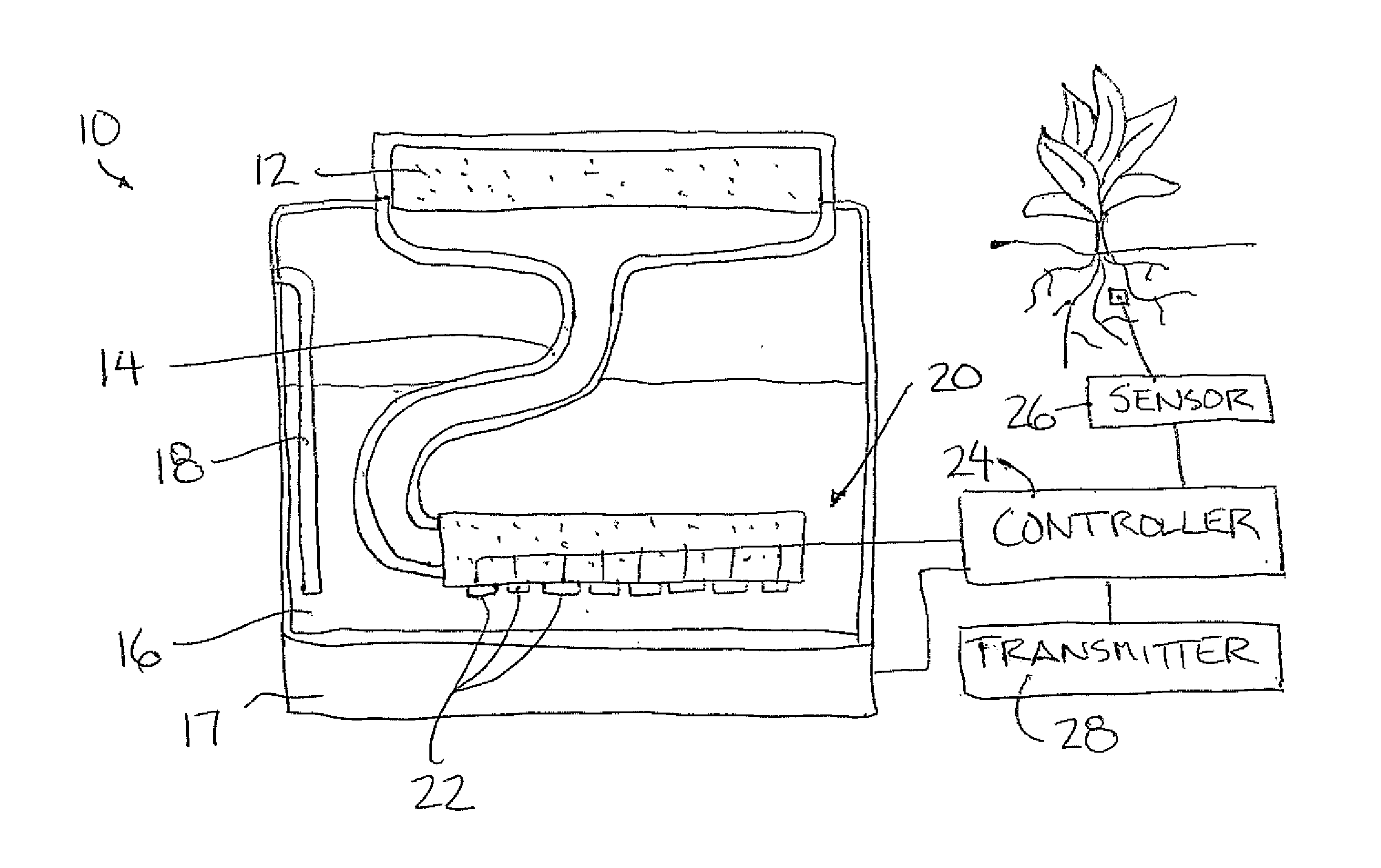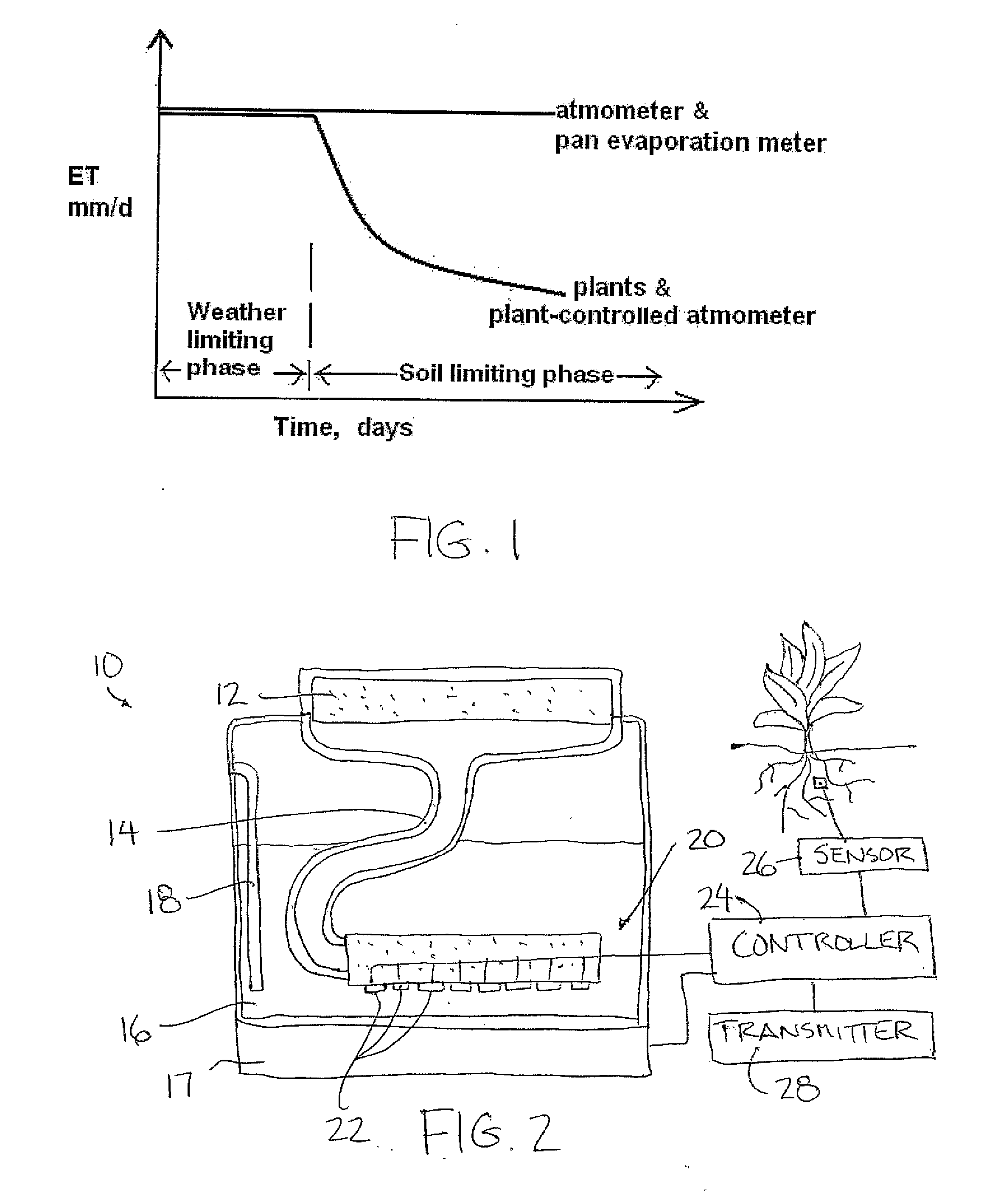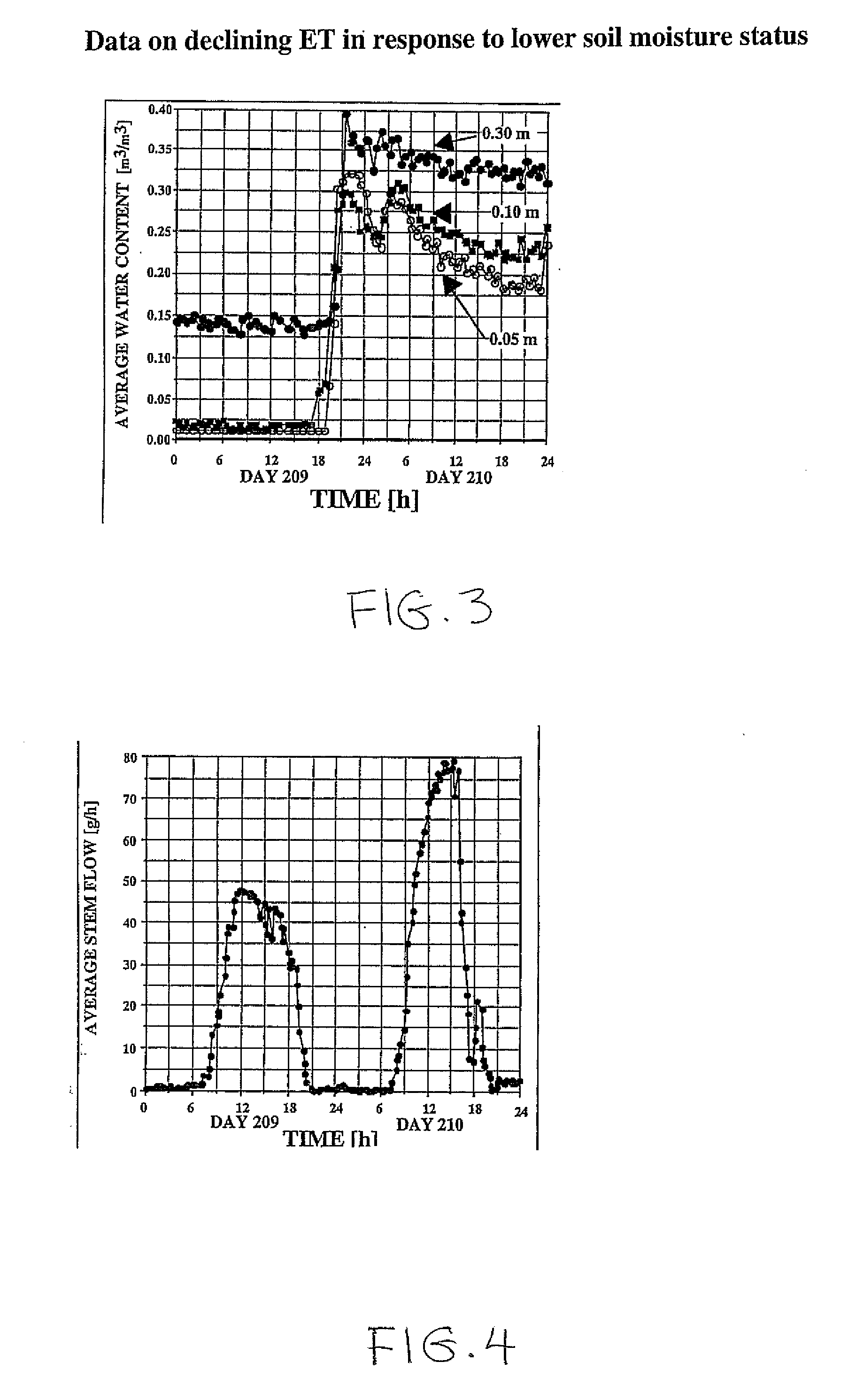Plant-Controlled Atmometer for Measuring Crop Evapotranspiration
a plant-controlled, atmometer technology, applied in the field of atmometers, can solve the problems of large errors, decrease in evapotranspiration, application of irrigation water, etc., and achieve the effect of accurately measuring et, reducing the evaporation rate through the atmometer, and reducing the rate of evaporation
- Summary
- Abstract
- Description
- Claims
- Application Information
AI Technical Summary
Benefits of technology
Problems solved by technology
Method used
Image
Examples
Embodiment Construction
[0037]The general purpose of this invention is to accurately measure the crop evapotranspiration so that the depth of next irrigation can be determined. At present, there are no accurate methods available that are simple enough for ordinary farmers to use. The existing prior art atmometer is not responsive to soil moisture conditions and therefore does not reflect what is truly happening in the field.
[0038]Referring to the accompanying figures there is illustrated an atmometer device generally indicated by reference numeral 10. The device 10 is particularly suited for estimating crop evapotranspiration in a manner which is responsive to soil moisture conditions.
[0039]The device comprises an evaporator member formed of a porous plate which is wetted and arranged to permit evaporation from an upper surface thereof. The upper surface may include a suitable covering thereon to prevent rain seepage into the porous plate and to also simulate the evaporation from a crop canopy.
[0040]A suct...
PUM
| Property | Measurement | Unit |
|---|---|---|
| depth | aaaaa | aaaaa |
| resistance | aaaaa | aaaaa |
| soil resistance | aaaaa | aaaaa |
Abstract
Description
Claims
Application Information
 Login to View More
Login to View More - R&D
- Intellectual Property
- Life Sciences
- Materials
- Tech Scout
- Unparalleled Data Quality
- Higher Quality Content
- 60% Fewer Hallucinations
Browse by: Latest US Patents, China's latest patents, Technical Efficacy Thesaurus, Application Domain, Technology Topic, Popular Technical Reports.
© 2025 PatSnap. All rights reserved.Legal|Privacy policy|Modern Slavery Act Transparency Statement|Sitemap|About US| Contact US: help@patsnap.com



